
Docklands, is an inner-city suburb in Melbourne, Victoria, Australia on the western end of the central business district. Docklands had a population of 15,495 at the 2021 census.

The City of Melbourne is a local government area in Victoria, Australia, located in the central city area of Melbourne. In 2021, the city has an area of 37.7 square kilometres (14.6 sq mi) and had a population of 149,615. The city's motto is "vires acquirit eundo" which means "we gather strength as we go".
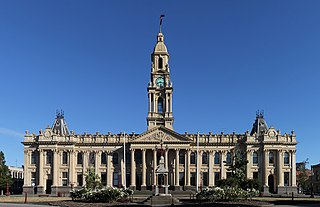
South Melbourne is an inner suburb in Melbourne, Victoria, Australia, 3 kilometres (1.9 mi) south of Melbourne's Central Business District, located within the City of Port Phillip local government area. South Melbourne recorded a population of 11,548 at the 2021 census.

Footscray is an inner-city suburb in Melbourne, Victoria, Australia, 5 km (3.1 mi) west of Melbourne's Central Business District, located within the City of Maribyrnong local government area and its council seat. Footscray recorded a population of 17,131 at the 2021 census.

South Kensington railway station is a commuter railway station on the Werribee and Williamstown lines, part of the Melbourne railway network. It serves the inner north-western suburb of Kensington in Melbourne, Victoria, Australia. South Kensington is a ground-level unstaffed station, featuring two side platforms. It opened on 11 March 1891, with the current station provided in 1975.
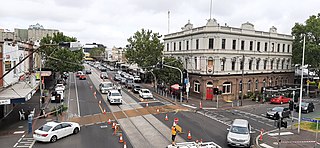
Flemington is an inner-city suburb in Melbourne, Victoria, Australia, 5 km (3.1 mi) north-west of Melbourne's Central Business District, located within the Cities of Melbourne and Moonee Valley local government areas. Flemington recorded a population of 7,025 at the 2021 census.

The Moonee Ponds Creek is a creek and major tributary of the Yarra River running through urban Melbourne, Victoria, Australia from northern to inner suburbs. In 2004 a reporter for The Age described it as "arguably the most abused tributary of the Yarra River, and part of the true underside of Melbourne".
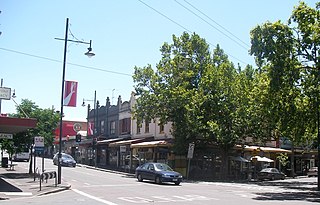
Kensington is an inner-city suburb in Melbourne, Victoria, Australia, 4 km (2.5 mi) north-west of Melbourne's Central Business District, located within the City of Melbourne local government area. Kensington recorded a population of 10,745 at the 2021 census.

West Melbourne is an inner-city suburb in Melbourne, Victoria, Australia, 2 km (1.2 mi) north-west of the Melbourne central business district, located within the City of Melbourne local government area. West Melbourne recorded a population of 8,025 at the 2021 census.
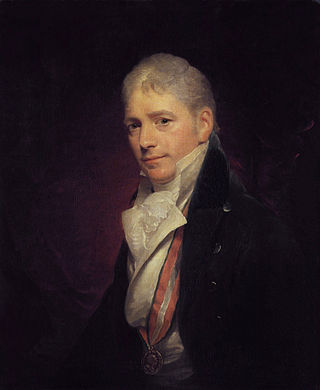
Sir Peter Francis Lewis Bourgeois RA was an English landscape painter and history painter, and court painter to king George III of the United Kingdom.
Maria Bronislavovna Vorobyeva-Stebelska, also known as "Marie Vorobieff" or Marevna, was a 20th-century, Russian-born painter known for her work with Cubism and pointillism.

Vicente Silva Manansala was a Filipino cubist painter and illustrator. One of the first Abstractionists on the Philippine art scene, Manansala is also credited with bridging the gap between the city and the suburbs, between the rural and cosmopolitan ways of life. His paintings depict a nation in transition, an allusion to the new culture brought by the Americans. Manansala, together with Fabian de la Rosa, are among the best-selling Philippine artists in the West.
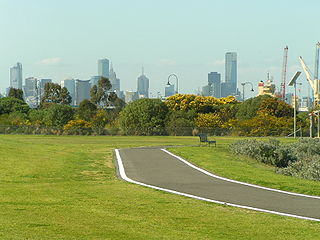
The Hobsons Bay Coastal Trail is a shared use path for cyclists and pedestrians, which follows the coast line of Hobsons Bay in the inner western suburbs in Melbourne, Victoria, Australia. The trail forms part of the western half of the Bayside Trail which encircles Port Phillip. It runs from the west side of the Westgate bridge, south and along the coast, finishing at the Skeleton Creek Trail in Sanctuary Lakes.

The rail network of Melbourne, Australia, has a significant number of railway lines and yards serving freight traffic. Rail transport in Victoria is heavily focused on Melbourne, and, as a consequence, much of the state's rail freight passes through the metropolitan network.

Docklands Highway is an urban highway stretching 12 kilometres from Brooklyn in Melbourne's inner western suburbs to the Docklands precinct, adjacent to the city. This name covers many consecutive streets and is not widely known to most drivers, as the entire allocation is still best known as by the names of its constituent parts: Francis Street, Whitehall Street, Moreland Street, Napier Street, Footscray Road, Dudley Street and Wurundjeri Way. This article will deal with the entire length of the corridor for sake of completion, as well to avoid confusion between declarations.

Giles Firmin Phillips (1780–1867) was an English artist and author. He painted landscapes and river scenes, primarily of the river Thames. His paintings were exhibited, among other venues, at the Royal Academy from 1836 - 1858. He is the author of several books on painting and lithography.

Paul Albert Laurens was a French painter.

The West Melbourne Swamp also known as Batman's Swamp, was a large saltwater wetland located to the west of the city of Melbourne, Victoria. It was an important resource for Aboriginal people.
Dudley Street is a main street in the Melbourne central business district, linking the northern Docklands district to the north-western corner of the CBD. Dudley Street is possibly named after the Governor General from 1908 to 1911, the Second Earl of Dudley, William Humble Ward.



















